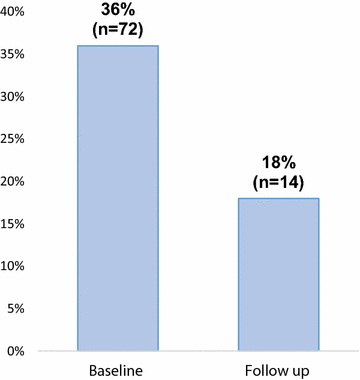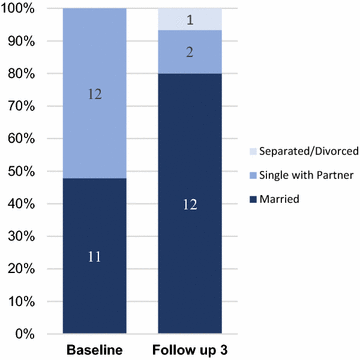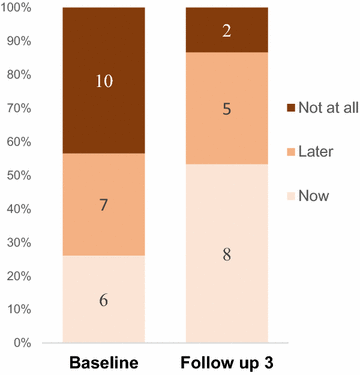Quality improvement as a framework for behavior change interventions in HIV-predisposed communities: a case of adolescent girls and young women in northern Uganda
- PMID: 29370820
- PMCID: PMC5785880
- DOI: 10.1186/s12981-018-0190-2
Quality improvement as a framework for behavior change interventions in HIV-predisposed communities: a case of adolescent girls and young women in northern Uganda
Abstract
Background: Despite the conventional approaches to HIV prevention being the bedrock for early reductions in HIV infections in Uganda, innovations that demonstrate reduction in risk to infection in vulnerable populations need to be embraced urgently. In the past 2 years, a USAID-funded project tested a quality improvement for behavior change model (QBC) to address barriers to behavioral change among adolescent girls and young women (AGYW) at high risk of HIV infection. The model comprised skills building to improve ability of AGYW to stop risky behavior; setting up and empowering community quality improvement (QI) teams to mobilize community resources to support AGYW to stop risky behavior; and service delivery camps to provide HIV prevention services and commodities to AGYW and other community members.
Methods: We recruited and followed a cohort of 409 AGYW at high risk of HIV infection over a 2-year period to examine the effect of the QBC model on risky behaviors. High-risk behavior was defined to include transactional sex, having multiple sexual partners, and non-use of condoms in high-risk sex. We documented unique experiences over the period to assess the effect of QBC model in reducing risky behavior. We analyzed for variances in risk factors over time using repeated measures ANOVA.
Results: There were statistically significant declines in high-risk behavior among AGYW over the QBC roll-out period (p < 0.05). Univariate analysis indicated reduction in AGYW reporting multiple sexual partners from 16.6% at baseline to 3.2% at follow up and transactional sex from 13.2 to 3.6%. The proportion of AGYW experiencing sexual and other forms of gender based violence reduced from 49% a baseline to 19.5% at follow up due to the complementary targeting of parents and partners by QI teams.
Conclusion: The QBC model is appropriate for the context of northern Uganda because it provides a framework for the community to successfully drive HIV prevention efforts and therefore is recommended as a model for HIV prevention in high-risk groups.
Keywords: Behavioral change; HIV risk; Model; Quality improvement.
Figures
Similar articles
-
Sexual behavior experiences and characteristics of male-female partnerships among HIV positive adolescent girls and young women: Qualitative findings from Zimbabwe.PLoS One. 2018 Mar 22;13(3):e0194732. doi: 10.1371/journal.pone.0194732. eCollection 2018. PLoS One. 2018. PMID: 29566062 Free PMC article.
-
Sexual-risk behaviours and HIV and syphilis prevalence among in- and out-of-school adolescent girls and young women in Uganda: A cross-sectional study.PLoS One. 2021 Sep 10;16(9):e0257321. doi: 10.1371/journal.pone.0257321. eCollection 2021. PLoS One. 2021. PMID: 34506577 Free PMC article.
-
Transactional sex and HIV risks - evidence from a cross-sectional national survey among young people in Uganda.Glob Health Action. 2015 May 21;8:27249. doi: 10.3402/gha.v8.27249. eCollection 2015. Glob Health Action. 2015. PMID: 26001780 Free PMC article.
-
Improving the Measurement of Transactional Sex in Sub-Saharan Africa: A Critical Review.J Acquir Immune Defic Syndr. 2019 Apr 1;80(4):367-374. doi: 10.1097/QAI.0000000000001928. J Acquir Immune Defic Syndr. 2019. PMID: 30789453 Free PMC article. Review.
-
A Systematic Review of HIV Interventions for Young Women in Sub-Saharan Africa.AIDS Behav. 2020 Dec;24(12):3395-3413. doi: 10.1007/s10461-020-02914-1. AIDS Behav. 2020. PMID: 32410052
Cited by
-
Evidence and gap map report: Social and Behavior Change Communication (SBCC) interventions for strengthening HIV prevention and research among adolescent girls and young women (AGYW) in low- and middle-income countries (LMICs).Campbell Syst Rev. 2023 Jan 10;19(1):e1297. doi: 10.1002/cl2.1297. eCollection 2023 Mar. Campbell Syst Rev. 2023. PMID: 36911864 Free PMC article.
-
Youth engagement in HIV prevention intervention research in sub-Saharan Africa: a scoping review.J Int AIDS Soc. 2021 Feb;24(2):e25666. doi: 10.1002/jia2.25666. J Int AIDS Soc. 2021. PMID: 33569913 Free PMC article.
-
Core Principles and Practices for the Design, Implementation, and Evaluation of Social and Behavior Change for Nutrition in Low- and Middle-Income Contexts with Special Applications for Nutrition-Sensitive Agriculture.Curr Dev Nutr. 2024 Jul 14;8(8):104414. doi: 10.1016/j.cdnut.2024.104414. eCollection 2024 Aug. Curr Dev Nutr. 2024. PMID: 39224137 Free PMC article. Review.
-
A health systems approach to more effective decentralised HIV prevention: development of Malawi's Blantyre Prevention Strategy.BMJ Glob Health. 2025 Feb 25;10(2):e016880. doi: 10.1136/bmjgh-2024-016880. BMJ Glob Health. 2025. PMID: 40010778 Free PMC article.
-
Multilevel model in the identification of behavioral and structural risk factors for HIV: integrative review.Rev Bras Enferm. 2022 Dec 16;76(1):e20210853. doi: 10.1590/0034-7167-2021-0853. eCollection 2022. Rev Bras Enferm. 2022. PMID: 36542051 Free PMC article. Review.
References
-
- Sensalire S, Kaggwa M, Byansi DB, Akinyemi Z, Kutanwa AN. Innovative approaches for preventing HIV among adolescent girls in Uganda: evidence from an evaluation study on anti cross generation sex in secondary schools. J AIDS. 2014
-
- Ministry of Health (MOH) [Uganda] and ORC Macro. Uganda HIV/AIDS Sero-behavioural Survey 2004–2005. Calverton, Maryland, USA: Ministry of Health and ORC Macro.
-
- World Health Organization, Department of Reproductive Health and Research, London School of Hygiene and Tropical Medicine, South African Medical Research Council. Global and regional estimates of violence against women: prevalence and health effects of intimate partner violence and non-partner sexual violence. Geneva, Switzerland; 2013.
Publication types
MeSH terms
Grants and funding
- AID-OAA-A-12-00101/This study and the intervention described were made possible by the support of the American people through PEPFAR and USAID, through the USAID Applying Science to Strengthen and Improve Systems (ASSIST) Project, implemented by University Research Co., LLC under Cooperative Agreement Number AID-OAA-A-12-00101./International
- PEPFAR/PEPFAR/United States
LinkOut - more resources
Full Text Sources
Other Literature Sources
Medical
Miscellaneous





